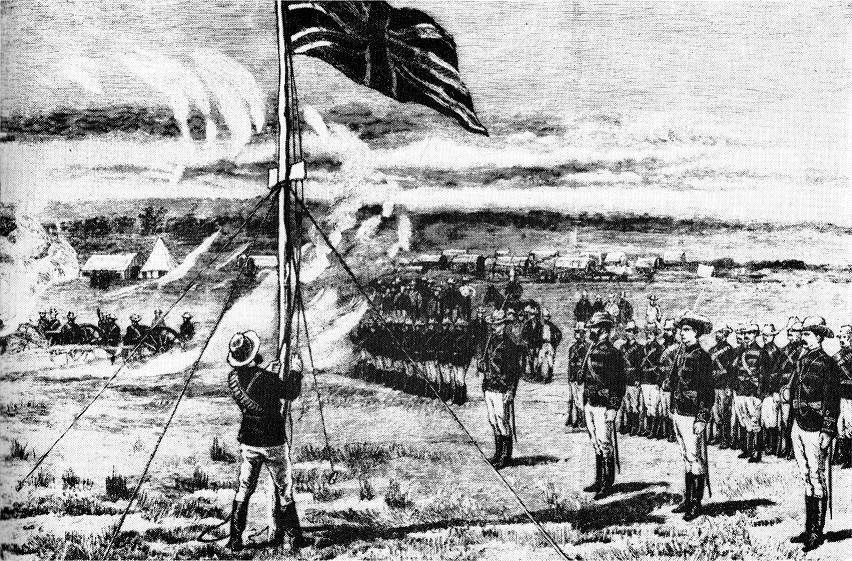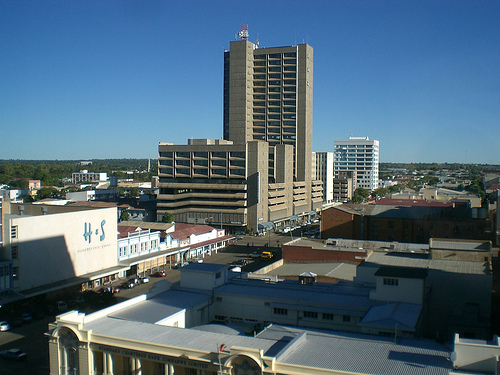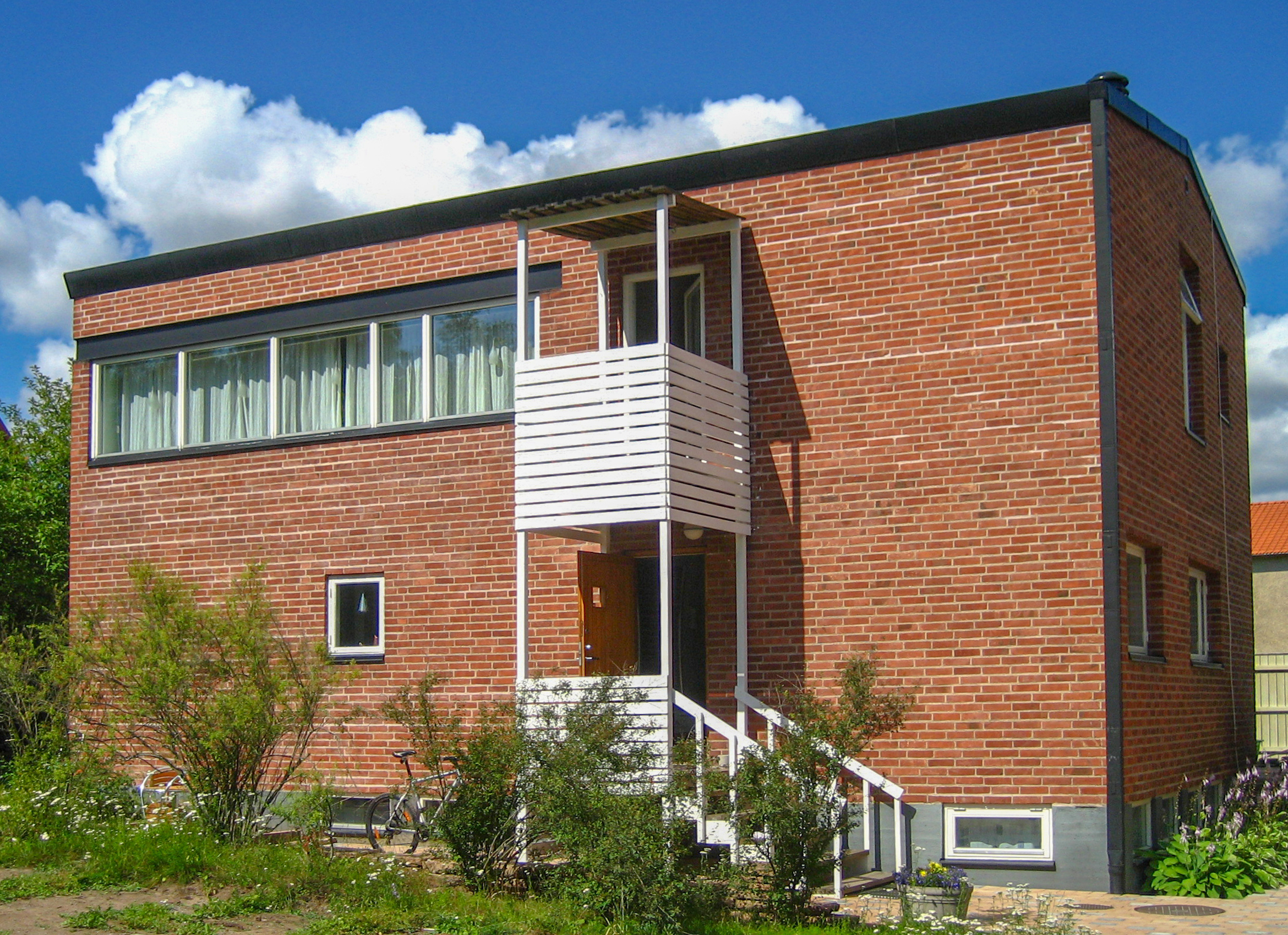|
ZANU–PF Building
The ZANU–PF Building is a 15-story high-rise building in Harare, Zimbabwe, which serves as the headquarters of ZANU–PF, the country's ruling party. The top floors of the building hold the offices of the ZANU–PF Politburo, lower floors hold other party offices, and the first floor is home to the ZANU Archives, which holds many records from the Rhodesian Bush War. The building hosts annual meetings of the party's politburo, central committee, and other organizations. Location The ZANU–PF Building is located in Harare, Zimbabwe, at the corner of Samora Machel Avenue and Rotten Row, next to Willoughby Crescent. History Fundraising for a new ZANU–PF headquarters began on 24 October 1983, when the party set a goal of raising Z$15 million in one year. Ultimately paid for by the Communist Party of China, construction began in the late 1980s, and the building was completed in 1990. Constructed during the post-independence building boom, the ZANU–PF Building, unlike many ... [...More Info...] [...Related Items...] OR: [Wikipedia] [Google] [Baidu] |
Harare
Harare (; formerly Salisbury ) is the Capital city, capital and most populous city of Zimbabwe. The city proper has an area of 940 km2 (371 mi2) and a population of 2.12 million in the 2012 census and an estimated 3.12 million in its metropolitan area in 2019. Situated in north-eastern Zimbabwe in the country's Mashonaland region, Harare is a metropolitan Harare Province, province, which also incorporates the municipalities of Chitungwiza and Epworth, Zimbabwe, Epworth. The city sits on a plateau at an elevation of above sea level and its climate falls into the subtropical highland category. The city was founded in 1890 by the Pioneer Column, a small military force of the British South Africa Company, and named Fort Salisbury after the UK Prime Minister Robert Gascoyne-Cecil, 3rd Marquess of Salisbury, Lord Salisbury. Company Company rule in Rhodesia, administrators demarcated the city and ran it until Southern Rhodesia achieved responsible government in 1923. Salisb ... [...More Info...] [...Related Items...] OR: [Wikipedia] [Google] [Baidu] |
Commercial Sorghum
Commercial sorghum is the cultivation and commercial exploitation of species of grasses within the genus ''Sorghum'' (often '' S. bicolor'', sometimes ''Sorghum arundinaceum''). These plants are used for grain, fibre and fodder. The plants are cultivated in warmer climates worldwide. Commercial ''Sorghum'' species are native to tropical and subtropical regions of Africa and Asia. Other names include ''durra'', Egyptian millet, ''feterita'', Guinea corn, ''jwari'' ज्वारी (Marathi), ''jowar'', ''juwar'', milo, ''shallu'', Sudan grass, ''cholam'' (Tamil), ''jola''/ಜೋಳ (Kannada), ''jonnalu'' జొన్నలు (Telugu), ''gaoliang'' ( :zh:高粱), great millet, ''kafir'' corn, ''dura'', ''dari'', ''mtama'', and ''solam''. Sorghum has been, for centuries, one of the most important staple foods for millions of poor rural people in the semiarid tropics of Asia and Africa. For some impoverished regions of the world, sorghum remains a principal source of energy, prot ... [...More Info...] [...Related Items...] OR: [Wikipedia] [Google] [Baidu] |
Office Buildings Completed In 1990
An office is a space where an organization's employees perform administrative work in order to support and realize objects and goals of the organization. The word "office" may also denote a position within an organization with specific duties attached to it (see officer, office-holder, official); the latter is in fact an earlier usage, office as place originally referring to the location of one's duty. When used as an adjective, the term "office" may refer to business-related tasks. In law, a company or organization has offices in any place where it has an official presence, even if that presence consists of (for example) a storage silo rather than an establishment with desk-and-chair. An office is also an architectural and design phenomenon: ranging from a small office such as a bench in the corner of a small business of extremely small size (see small office/home office), through entire floors of buildings, up to and including massive buildings dedicated entirely to ... [...More Info...] [...Related Items...] OR: [Wikipedia] [Google] [Baidu] |
Headquarters Of Political Parties
Headquarters (commonly referred to as HQ) denotes the location where most, if not all, of the important functions of an organization are coordinated. In the United States, the corporate headquarters represents the entity at the center or the top of a corporation taking full responsibility for managing all business activities. In the United Kingdom, the term head office (or HO) is most commonly used for the headquarters of large corporations. The term is also used regarding military organizations. Corporate A headquarters is the entity at the top of a corporation that takes full responsibility for the overall success of the corporation, and ensures corporate governance. The corporate headquarters is a key element of a corporate structure and covers different corporate functions such as strategic planning, corporate communications, tax, legal, marketing, finance, human resources, information technology, and procurement. This entity includes the chief executive officer (CEO) a ... [...More Info...] [...Related Items...] OR: [Wikipedia] [Google] [Baidu] |
Buildings And Structures In Harare
A building, or edifice, is an enclosed structure with a roof and walls standing more or less permanently in one place, such as a house or factory (although there's also portable buildings). Buildings come in a variety of sizes, shapes, and functions, and have been adapted throughout history for a wide number of factors, from building materials available, to weather conditions, land prices, ground conditions, specific uses, prestige, and aesthetic reasons. To better understand the term ''building'' compare the list of nonbuilding structures. Buildings serve several societal needs – primarily as shelter from weather, security, living space, privacy, to store belongings, and to comfortably live and work. A building as a shelter represents a physical division of the human habitat (a place of comfort and safety) and the ''outside'' (a place that at times may be harsh and harmful). Ever since the first cave paintings, buildings have also become objects or canvasses of much artist ... [...More Info...] [...Related Items...] OR: [Wikipedia] [Google] [Baidu] |
List Of Tallest Buildings In Zimbabwe
Zimbabwe has 13 buildings that stand taller than 70 metres (230 ft). The tallest building in Zimbabwe would not have been the RBZ (28 storey, 120m tall), not even any building in Harare. If it had been built, the tallest building in Zimbabwe would have been the ABC Building (33 storey, 141m tall) in Zvishavane, designed in 1976 by John Graham Architects. Harare, Zimbabwe's capital city, is where most of the country's tallest buildings are concentrated. The tallest building in Zimbabwe is the 28 storey, New Reserve Bank building in Harare that is tall. , the country has 4 skyscrapers over and 30 high-rise buildings that exceed in height. There are currently no major high-rise developments under construction or proposed in the country. Buildings This list ranks Zimbabwe high-rises that stand at least tall, based on standard height measurement. This includes spires and architectural details but does not include antenna masts. See also * List ... [...More Info...] [...Related Items...] OR: [Wikipedia] [Google] [Baidu] |
Brutalist Architecture
Brutalist architecture is an architectural style that emerged during the 1950s in the United Kingdom, among the reconstruction projects of the post-war era. Brutalist buildings are characterised by minimalist constructions that showcase the bare building materials and structural elements over decorative design. The style commonly makes use of exposed, unpainted concrete or brick, angular geometric shapes and a predominantly monochrome colour palette; other materials, such as steel, timber, and glass, are also featured. Descending from the modernist movement, Brutalism is said to be a reaction against the nostalgia of architecture in the 1940s. Derived from the Swedish phrase ''nybrutalism,'' the term "New Brutalism" was first used by British architects Alison and Peter Smithson for their pioneering approach to design. The style was further popularised in a 1955 essay by architectural critic Reyner Banham, who also associated the movement with the French phrases ''bé ... [...More Info...] [...Related Items...] OR: [Wikipedia] [Google] [Baidu] |
Cockerel
The chicken (''Gallus gallus domesticus'') is a domesticated junglefowl species, with attributes of wild species such as the grey and the Ceylon junglefowl that are originally from Southeastern Asia. Rooster or cock is a term for an adult male bird, and a younger male may be called a cockerel. A male that has been castrated is a capon. An adult female bird is called a hen and a sexually immature female is called a pullet. Humans now keep chickens primarily as a source of food (consuming both their meat and eggs) and as pets. Traditionally they were also bred for cockfighting, which is still practiced in some places. Chickens are one of the most common and widespread domestic animals, with a total population of 23.7 billion , up from more than 19 billion in 2011. There are more chickens in the world than any other bird. There are numerous cultural references to chickens – in myth, folklore and religion, and in language and literature. Genetic studies have pointed ... [...More Info...] [...Related Items...] OR: [Wikipedia] [Google] [Baidu] |
Emblem
An emblem is an abstract or representational pictorial image that represents a concept, like a moral truth, or an allegory, or a person, like a king or saint. Emblems vs. symbols Although the words ''emblem'' and ''symbol'' are often used interchangeably, an emblem is a pattern that is used to represent an idea or an individual. An emblem develops in concrete, visual terms some abstraction: a deity, a tribe or nation, or a virtue or vice. An emblem may be worn or otherwise used as an identifying badge or patch. For example, in America, police officers' badges refer to their personal metal emblem whereas their woven emblems on uniforms identify members of a particular unit. A real or metal cockle shell, the emblem of St. James the Apostle, sewn onto the hat or clothes, identified a medieval pilgrim to his shrine at Santiago de Compostela. In the Middle Ages, many saints were given emblems, which served to identify them in paintings and other images: St. Catheri ... [...More Info...] [...Related Items...] OR: [Wikipedia] [Google] [Baidu] |
Carton
A carton is a box or container usually made of liquid packaging board, paperboard and sometimes of corrugated fiberboard. Many types of cartons are used in packaging. Sometimes a carton is also called a box. Types of cartons Folding cartons A carton is a type of packaging typically made from paperboard that is suitable for food, pharmaceuticals, hardware, and many other types of products. Folding cartons are usually combined into a tube at the manufacturer and shipped flat (knocked down) to the packager. Tray styles have a solid bottom and are often shipped as flat blanks and assembled by the packager. Some also are self-erecting. High-speed equipment is available to set up, load, and close the cartons. Egg carton Egg cartons or trays are designed to protect whole eggs while in transit. Traditionally, these have been made of molded pulp. This uses recycled newsprint which is molded into a shape which protects the eggs. More recently, egg cartons have also been made ... [...More Info...] [...Related Items...] OR: [Wikipedia] [Google] [Baidu] |
Chibuku Shake Shake
Chibuku is a commercial sorghum beer based on the traditional Umqombothi home made African beers, the main grains used are malted sorghum and maize but may also contain millet. The brand name The name Chibuku comes from Max Heinrich's habit of recording all consumers' comments and process changes in a book, and Chibuku is an adaptation of the local word for "book" - "Chi" is the prefix meaning "big", "buk" = "book", and the terminal "u" is because most African nouns tend to end in a euphonic vowel. The shake-shake comes from the ritual of first shaking up the beer before taking the first sip. The beer contains starch, the germ and yeast (all normally removed in lagers and ales) and since the solids settle to the bottom of the carton, it needs to be shaken before sipping. Alcohol content The alcohol content in a fresh Chibuku is fairly low starting at about 0.5% ABV on day one, but as fermentation continues in the carton, the longer it is kept before drinking, the stronger it get ... [...More Info...] [...Related Items...] OR: [Wikipedia] [Google] [Baidu] |
Zimbabwe
Zimbabwe (), officially the Republic of Zimbabwe, is a landlocked country located in Southeast Africa, between the Zambezi and Limpopo Rivers, bordered by South Africa to the south, Botswana to the south-west, Zambia to the north, and Mozambique to the east. The capital and largest city is Harare. The second largest city is Bulawayo. A country of roughly 15 million people, Zimbabwe has 16 official languages, with English, Shona language, Shona, and Northern Ndebele language, Ndebele the most common. Beginning in the 9th century, during its late Iron Age, the Bantu peoples, Bantu people (who would become the ethnic Shona people, Shona) built the city-state of Great Zimbabwe which became one of the major African trade centres by the 11th century, controlling the gold, ivory and copper trades with the Swahili coast, which were connected to Arab and Indian states. By the mid 15th century, the city-state had been abandoned. From there, the Kingdom of Zimbabwe was established, fol ... [...More Info...] [...Related Items...] OR: [Wikipedia] [Google] [Baidu] |








.jpg)
